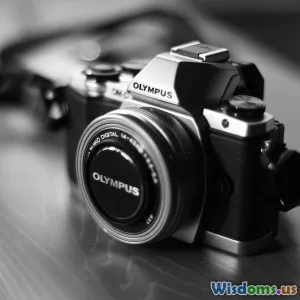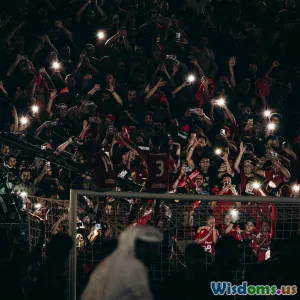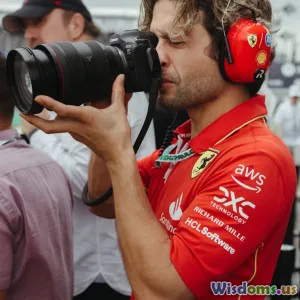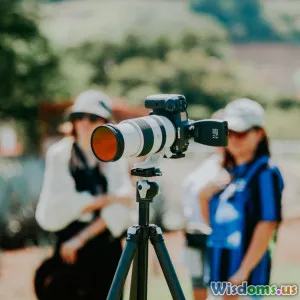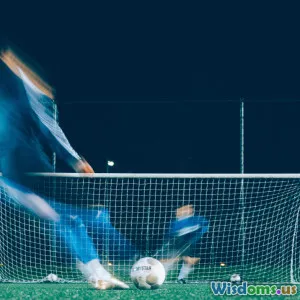
Freezing the Perfect Football Tackle With Shutter Speed
9 min read Master the art of capturing crisp, dynamic football tackles using shutter speed to freeze motion and highlight action intricacies. (0 Reviews)
Freezing the Perfect Football Tackle With Shutter Speed
Capturing the pinnacle excitement of a football game often hinges on the photographer’s ability to freeze dynamic moments, such as a perfectly executed tackle. The blur of motion, the explosion of energy, and the raw emotion of the players become immortalized in a single breathtaking image when shutter speed is employed effectively. But how exactly do photographers capture these split-second interactions with precision and artistry? This article unfolds the secrets behind mastering shutter speed techniques to freeze the perfect football tackle.
Understanding Shutter Speed: The Key to Freeze Motion
At its core, shutter speed dictates how long your camera’s sensor is exposed to light. This exposure time impacts how motion is rendered: fast shutter speeds can freeze action, while slower ones blur it.
For football photography, where athletes sprint, leap, and collide within fractions of a second, shutter speed becomes the most crucial tool for revealing freeze-frames of intensity. Typically, shutter speeds upwards of 1/1000th of a second are necessary to sharply capture rapid movement like tackles, where subjects can move at speeds reaching 20 to 25 miles per hour or more.
Renowned sports photographer Neil Leifer once noted, “Capturing sport is a matter of anticipation and technical precision—get the settings right, and you can stop time.” This rings especially true for tackling scenes that last less than a blink.
The Science Behind Freezing the Action
When a photograph freezes motion successfully:
- The shutter must open and close faster than the subject’s movement causes visible displacement.
- For extremely fast movements, such as ESPN-level tackles, shutter speeds of 1/2000s to 1/4000s can be needed to prevent motion blur.
- The faster the shutter speed, the less light hits the sensor, which requires compensation via lens aperture and ISO settings to maintain proper exposure.
Why Not Just Use the Fastest Shutter Speed Always?
While faster shutter speeds stop motion effectively, they reduce light intake and can increase image noise (due to higher ISO settings). This makes mastering the balance critical, especially in less-than-ideal lighting such as evening or overcast games.
Key Factors to Successfully Freeze a Football Tackle
Anticipation and Timing
The ultimate battle for every sports photographer is timing. A tackle happens in milliseconds:
- Anticipating Player Movement: Understand player positions, typical tackling angles, and moment cues—such as when a defender leans forward or the ball carrier lowers their center of gravity.
- Burst Mode Advantage: Utilizing high-frame-rate burst modes (often 10-14 fps) allows for several shots in rapid succession, increasing your chance of catching the peak moment.
Equipment Considerations
- Camera: A DSLR or mirrorless camera capable of high shutter speeds with a fast autofocus system.
- Lens: Fast lenses with wide apertures (e.g., f/2.8) provide more light and enable faster shutter speeds.
- Autofocus: Continuous autofocus (AI Servo for Canon/AF-C for Nikon/Sony) tracks moving players dynamically.
- Image Stabilization: While IS helps reduce camera shake, freezing fast action depends mainly on shutter speed rather than stabilization.
Lighting Conditions
Natural daylight is a perk in outdoor afternoon games, allowing faster shutter speeds without pushing ISO excessively. Conversely:
- Low-light conditions, such as night games, challenge the photographer to open apertures wider or raise ISO.
- Modern cameras with excellent high ISO performance facilitate shutter speeds beyond 1/2000s in these scenarios.
Step-by-Step Guide: Freezing the Football Tackle
1. Choose the Right Settings
- Shutter Speed: Start at 1/2000s or faster.
- Aperture: Use wide apertures (f/2.8 - f/4) to boost exposure and isolate subjects with shallow depth of field.
- ISO: Adjust upward as needed based on light but aim to keep noise minimal (ISO 800–1600 in most cases).
2. Camera Mode
Shoot in shutter priority (Tv or S mode) to prioritize controlling shutter speed. Alternatively, shoot manual mode if you’re comfortable balancing ISO and aperture on the fly.
3. Composition and Focus
- Position yourself where tackles are most likely to occur. Common zones include near the line of scrimmage or the sideline.
- Lock focus on key defenders or the ball carrier.
4. Timing the Shot
- Watch body language for the moment before collision.
- Engage burst mode and hold down the shutter at the first sign of imminent contact.
5. Review and Adjust
Immediately review shots. If motion blur appears, increase shutter speed or ISO. If underexposed, tweak aperture or ISO accordingly.
Real-World Example: Capturing an Iconic Tackle
Legendary sports photographer Walter Iooss Jr.’s renowned photographs underscore these principles. For a famous tackle photo:
- Iooss used 1/2500s shutter speed during daylight at an aperture of f/4 and ISO 400.
- He anticipated the moment by positioning close to the action with a 300mm lens.
- His mastery enabled freezing the moment mid-air with opposing players’ muscles and expressions in vivid detail.
Overcoming Challenges
Motion Blur Despite Fast Shutter
- Offsets may be due to panning cameras inadvertently.
- Use a tripod or monopod for stability.
Insufficient Light
- Use prime lenses with even wider apertures (f/1.8).
- Post-process noise reduction intelligently.
Missing the Moment
- Practice understanding player tendencies and game dynamics.
- Employ remote or second shooters to cover multiple angles.
Advanced Tips to Enhance Freeze-Frame Football Photography
- Combine Fast Shutter with Flash: High-speed sync flash can provide a burst of light to freeze action indoors or low light.
- Shoot RAW Format: Maintain flexibility in post-processing to recover exposure or fine-tune details.
- Leverage Burst and Buffer Size: Ensure your camera’s buffer and card speed can handle burst shots without lag.
- Use Focus Peaking (Mirrorless Cameras): Helps confirm horizon focus amidst rapid movement.
Conclusion: Frozen Moments that Tell a Story
The perfect football tackle frozen through careful shutter speed control is more than a technical feat — it narrates passion, power, and athletic prowess in an instant. By mastering shutter speed, understanding lighting, anticipating action, and refining timing, photographers can transform fleeting collisions into iconic sports artistry.
The electrifying story of every tackle awaits to be told one shot at a time. Equip your camera, hone your instincts, and start freezing moments that will resonate long after the final whistle blows.
Embrace the challenge; the perfect tackle awaits your capture.
References:
- Neil Leifer, Legendary Sports Photographer Insights
- Walter Iooss Jr. Photography Techniques
- Digital Photography Review: Shutter Speed Explained
- Nikon Official User Guides, Continuous AF Modes
- Sports Illustrated: The Art of Capturing Motion in Sports Photography
Article by [AI Content Generator]
Rate the Post
User Reviews
Popular Posts











